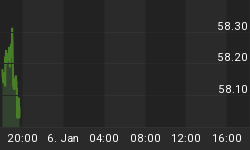With the "dumb money" neutral and the "smart money" bearish on equities, it is unlikely that equity prices will gain much traction in the coming weeks. The ideal situation for higher equity prices would be for the "smart money" to be bullish and the "dumb money" bearish (i.e., bull signal).
The "dumb money" or investment sentiment composite indicator (see figure 1, a weekly chart of the S&P500) looks for extremes in the data from 4 different groups of investors who historically have been wrong on the market: 1) Investor Intelligence; 2) Market Vane; 3) American Association of Individual Investors; and 4) the put call ratio.
Figure 1. "Dumb Money"
The "smart money" (see figure 2) refers to those investors and traders who make their living in the markets. Supposedly they are in the know, and we should follow their every move. The "smart money" indicator is a composite of the following data: 1) public to specialist short ratio; 2) specialist short to total short ratio; 3) SP100 option traders.
Figure 2. "Smart Money"
In sum, this is the second week in a row where the "dumb money" is neutral and the "smart money" is bearish, and this is not a scenario that is generally supportive of higher prices especially with prices on the S&P500 under their 40 week moving average.
















